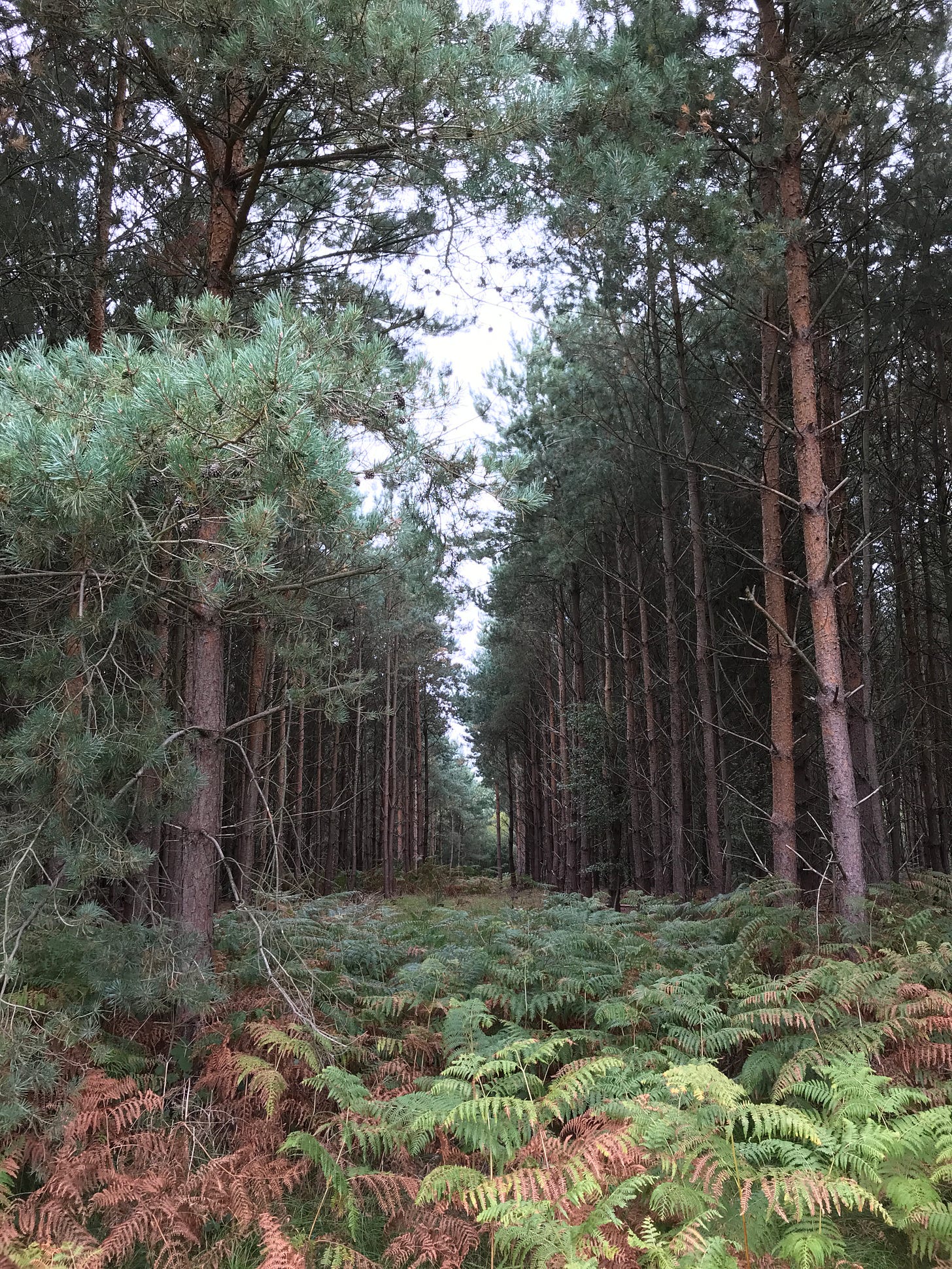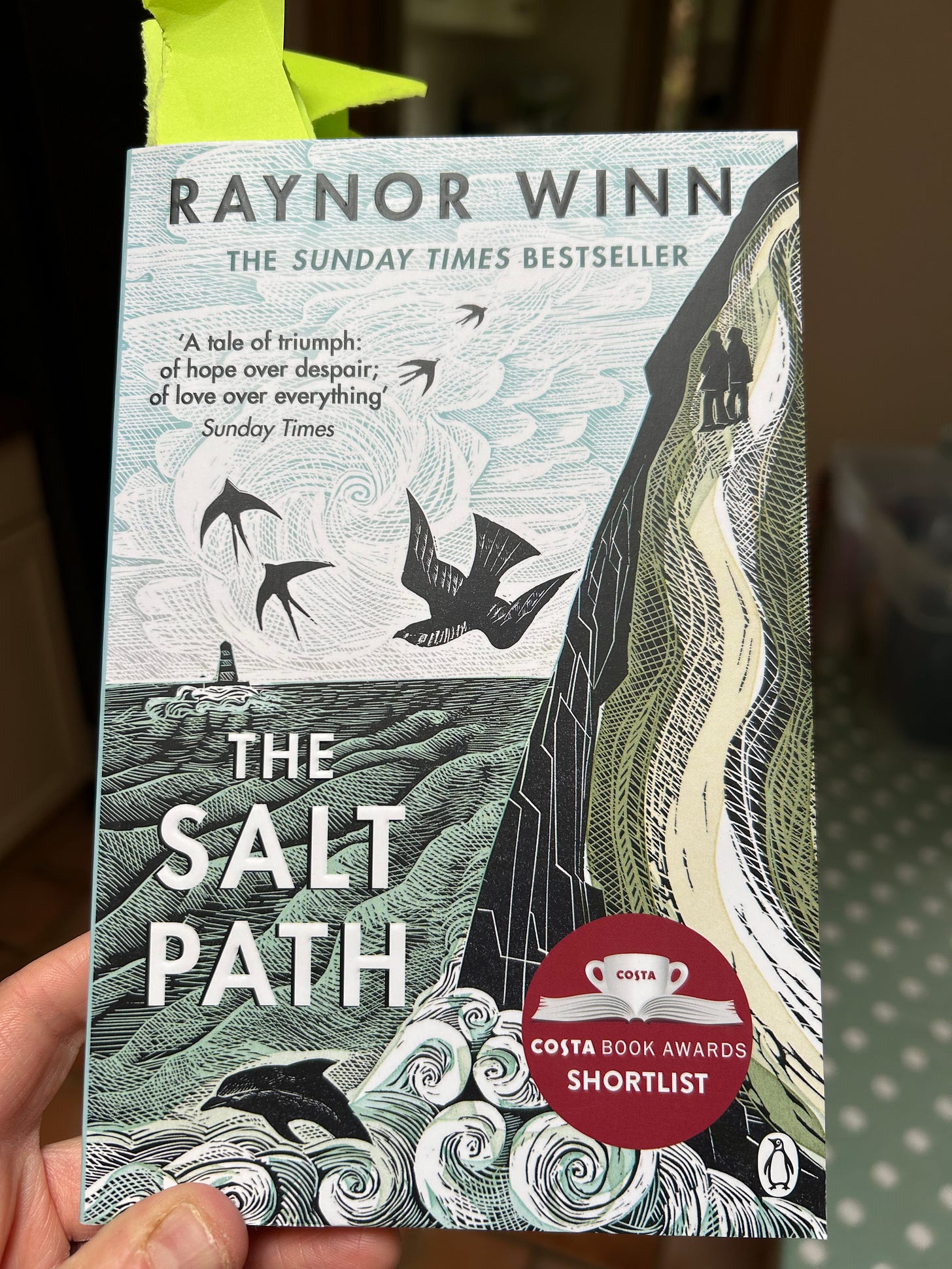Nature Most Unnatural
The Salt Path scandal and what it means for horror
Anyone who’s suffered with depression and anxiety will have no doubt heard something along the lines of, Spend more time outdoors! Connect with nature! All the endorphins from exercising will make you feel sooo much better. There is, of course, truth to these statements. The 2021 article, ‘Associations between Nature Exposure and Health: A Review of the Evidence,’ cites numerous studies that reveal a positive association between exposure to green spaces and mental wellness. Indeed, I’ve even posted about the benefits of forest bathing on my now defunct blog.
But I defy anyone with severe depression, who is struggling to get out of bed and shower, to lace up their hiking boots, shrug on a waterproof and plunge headlong into the Great Outdoors. And the suggestion that nature alone can cure you is a classic piece of well-meaning but ultimately problematic advice; it creates the impression that we don’t need Big Pharma, just Mother Nature. I get equally irked when people say that therapy is the only way to get better from anxiety, depression and trauma. On a Mental Health First Aid training course, an instructor even told me that, if you’re still on medication, you’ve not fully recovered. A great message to send out, when one of the main aims of MHFA is reducing shame around mental health disorders and their treatment.
A few years back, I wrote a semi-autobiographical short story about a young woman, suffering with depression, who’s told to ‘commune with nature.’ Her attempts awaken something in the garden—something which appears to be helping her, but may have its own motives.
My thoughts turned to the natural world again this week, in light of the Raynor Winn The Salt Path controversy. Now, I’m not one to revel in another’s misery, however well deserved (unless it’s misery that I’ve imposed on my characters—then, I positively roll in it, tongue hanging out). But this week, I felt compelled to join the chorus of Raynor Winn critics. For those who’ve been living off-grid, let me update you: on the fifth of July, The Observer published the truth behind the best-selling memoir, The Salt Path.
The book charts the journey of Raynor and her husband, Timothy ‘Moth’ Winn, along the South West Coast Path. Taken at face-value, The Salt Path is an inspiring story of a couple overcoming adversity. Days prior to the journey, Moth was diagnosed with the terminal brain disease, CBD. Not only that, but they had fallen foul of a bad investment and, screwed over by a childhood friend and the cold-hearted judicial system, had lost their farm, their savings, everything.
With nowhere else to go and nothing else to lose, Winn proposes walking the 630-mile path. Thus begins a miraculous journey of acceptance and healing in the natural world. The prologue describes Moth running with a tent above his head. The cause of his sudden improvement? Why, walking, of course! The sea air! He comes off Pregabalin, which he was taking to treat his nerve pain, and feels ‘different, clearer’ (p. 82). His pain continues to recede as the journey continues. He puts this down to ‘extra oxygen being forced through the body,’ which can ‘halt the process’ of brain degeneration (p. 206). The anti-medical bias that runs through the book is as strong as Winn’s sense of victimhood.
The Observer’s report is mainly focused on how Winn (real name, Sally Walker), embezzled money from her former boss, took out a loan from one of Moth’s relatives to repay the stolen funds and then lost the house when the couple didn’t pay it back. It only touches upon the scepticism surrounding Timothy’s diagnosis of CBD. Sally Walker has since responded to allegations that her husband’s disease was perhaps not as degenerative as she suggested, providing photographs of medical documents. One states that Moth’s disease may be ‘an atypical form of corticobasal degeneration’ or perhaps ‘an even more unusual disorder.’ She also defended her portrayal of his recovery, saying, ‘I have never sought to offer medical advice in my books or suggest that walking might be some sort of miracle cure for CBS, I am simply charting Moth's own personal journey and battle with his illness, and what has helped him.’ While the dubious medical claims all come from Moth’s mouth, Walker bears a responsibility for how she presents his improvement. And the doctors, just like other establishment figures in this book, are portrayed as stubborn, narrow-minded, even a little cruel.
Why should this matter to us, as fans of horror? Well, like dark fiction, fairytale and fable, the natural world offers an escape from daily drudgeries. When we enter a forest or open a nerve-shredding book, we step into a realm where the normal rules don’t apply, and it’s magic. Readers and writers of subversive material ally ourselves with the Grendels, the hags, the children of the night—unnatural creatures that are, paradoxically, the most natural of all. The folk horror revival of recent years may have made us more aware of the cycles of the moon and the seasons, and how they influence the flow of our emotional and physical states. What a delicious alternative to modern life! On a wider scale, the intense interest in witch lit is not only a reaction against the patriarchy, but capitalism and commodification—though, ironically, there’s many a witch on Instagram selling herbs, oils and crystals with supposedly curative properties. It would be so easy to think that nature holds all the answers; that it can take us out of our own minds, often the darkest places of all. But we need to be prepared to draw a line between fact and fantasy. As Hollie Starling, author of The Bleeding Tree argued on X this week, we owe it to the vulnerable to question narratives that present nature, or indeed anything, as a cure-all. Sometimes, we need a dose of reality, and sometimes, that comes in a bottle over the counter.
*
I initially planned to post only once a month. But since joining Substack, I’m been persuaded that once a week is a better model. If you’d rather not receive so much mail from me, feel free to unsubscribe.



Love your article!
In clinical psychology, we’re taught that diet, exercise, and fresh are ARE vital, but they’re only first steps. They put you in a good enough mental and physical state to engage in the deeper issues affecting you. So, while fresh air on its own certainly won’t cure you as you rightly said, not getting any is like starting a race ten feet behind everyone else.